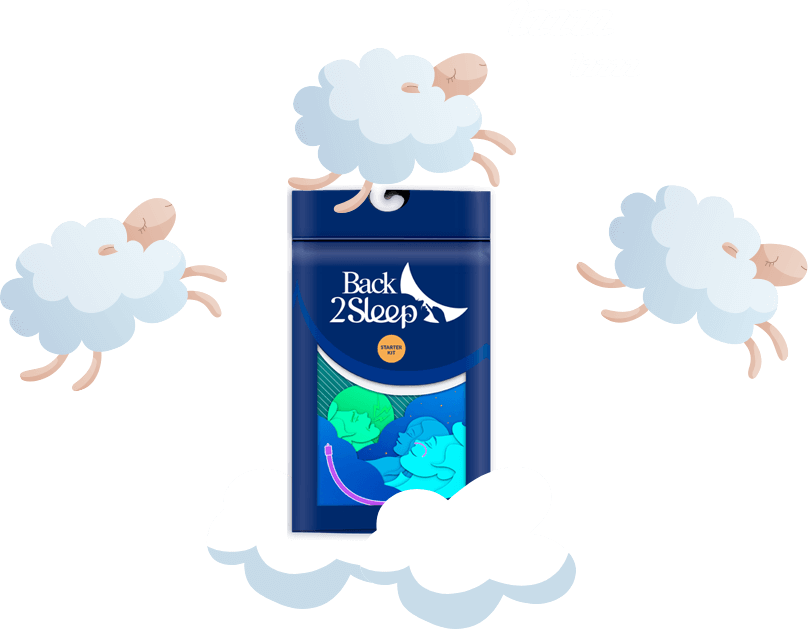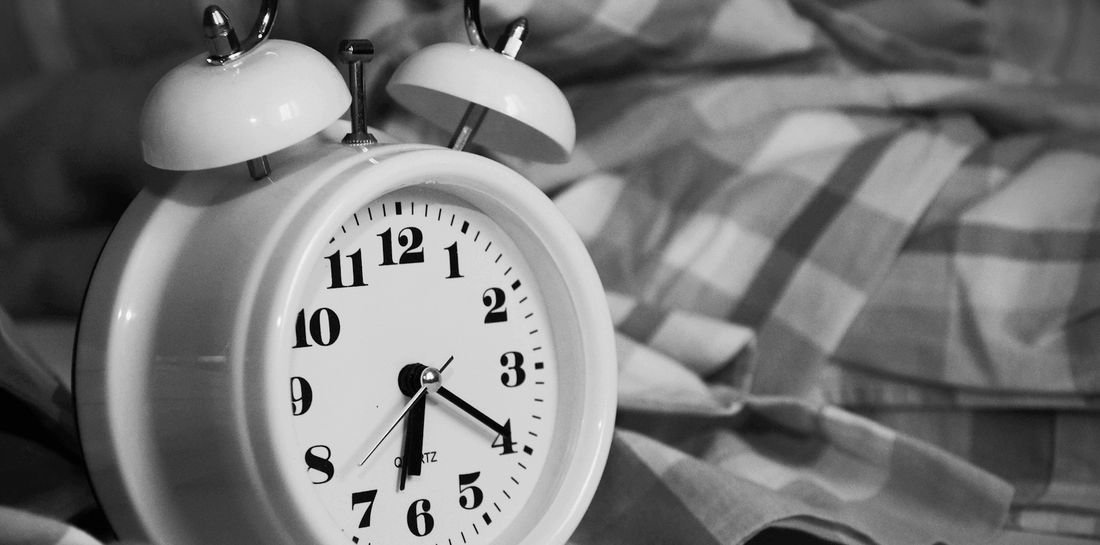Read also: "Sleep apnea - Definition, mechanism and treatment"
Parasomnias refer to a range of sleep disorders that occur during different stages of sleep, including deep slow wave sleep, when brain activity slows down. These disturbances can occur during the first few hours of sleep, at the start of the night, or at any other time, altering sleep quality and disrupting normal sleep cycles. Some sleepers may experience frequent night-time awakenings, while others experience excessive daytime sleepiness or difficulty falling asleep.
Although nightmare parasomnia may seem like a trivial disorder, some parasomnias, such as sleepwalking or night terrors, can provoke agitated behavior during sleep, even endangering the sleeper.
The importance of disorders and their impact on the sleep cycle biological clockand circadian circadian rhythm often require sleep studies in specialized centers, using tools such as electroencephalogram (EEG). It is crucial for every individual to understand these disturbances in order to sleep better and preserve restful sleep.
Parasomnia and deep sleep
The mysteries of the night often lead us into the complex world of parasomnia. Interfering with our sleep cycles, these disorders disrupt our rest, defined by different sleep phases, from the lightness of light sleep to the depth of very deep sleep. In the context of these parasomnias, some people wake up with a start, others talk in their sleep or shake their limbs during these precious hours of recuperation. Distinguishing between these disorders is essential for a good night's sleep and good sleep hygiene.
Night terrors
Night terrors are common in younger children. Imagine a child sleeping peacefully, immersed in a phase of deep sleep, who suddenly wakes up, eyes open but mind still in the arms of Morpheus. These moments, which are often more troubling for parents than for the child, occur at night, when the child may become agitated during sleep, crying out or behaving incoherently. Providing a soothing environment before bedtime is essential to minimize these episodes.

This disorder is hereditary. This may be followed by sleepwalking episodes after the age of 5, which generally disappear in adulthood. It's important not to frighten the child by talking to him, and to deal with any anxiety-provoking situation that disturbs him during the day, to help him fall asleep calmly.
Sleepwalking
Sleepwalking is one of the best-known parasomnias. It affects 3% of adults, and in children generally disappears around adolescence. Here too, genes are involved: genetic predispositions favor sleepwalking in people under stress or who have experienced trauma. There are several types of sleepwalking: simple sleepwalking and risky sleepwalking.
The first is generally harmless. The individual performs simple gestures, such as turning on the lights, or more complex ones, such as descending stairs, eating or driving.
Risky sleepwalking is, as the name suggests, more dangerous: the person may commit misdemeanors or even felonies. With higher-frequency seizures, people suffering from at-risk sleepwalking can injure themselves or others, or even defenestrate.
Confusional arousals
Confusional wakefulness has many names: it's also known as sleep inertia or sleep intoxication. This disorder reveals itself as a state of confusion or inappropriate behavior on awakening, often after a forced awakening in deep sleep. The subject can be incoherent or even violent. Episodes are generally followed by amnesia.
The majority of people experiencing confusional arousals have other sleep disorders. In other cases, people present with a mental disorder or have experienced confusional arousal following psychotropic medication. Alcohol abuse and lack of sleep are often the cause. *Parasomnia causes

Parasomnia and REM sleep
During REM sleep, brain activity is high: this is when the most elaborate dreams occur. REM sleep also has its own parasomnias.
Nightmares
Nightmares, which can disrupt sleep quality and time, differ from night terrors. Often, after a nightmare, the individual finds it difficult to return to peaceful sleep, and insomnia can occur. The memory of the nightmare persists on awakening, accompanied by a feeling of anguish or sadness. These disruptive dreams are frequent in childhood and tend to diminish with adulthood. However, when they are stimulated by situations such as stress, fever, sleep deprivation or alcohol ingestion, their occurrence can become more frequent.
Sleep disorders such as sleep apnea, hypersomnia or even restless legs syndrome can also influence the occurrence of nightmares. Poor sleep quality can lead to other daytime symptoms, such as excessive daytime sleepiness or lack of muscle tone. If these nightmares persist, especially beyond childhood, and regularly disrupt sleep patterns, it's crucial to consult a sleep specialist.
Restless sleep affects not only sleep duration, but also brain function, memory and the nervous system, with potentially serious consequences for overall health.
REM sleep behavior disorders
In REM sleep, the body is atonic: muscles at rest do not react. Someone suffering from REM sleep behavior disorders will show abnormal physical activity. The program includes violent behavior such as shouting, attempted attacks or sudden gestures, parallel to the person's dream. Here, it's more a case of adult parasomnia, particularly affecting men over 50. The person reacts in real life as in their dream, possibly offending those around them or themselves, often trying to defend themselves against a dream enemy.
This disorder can have several causes, such as withdrawal or a side effect of a medication. However, if the disorder appears chronically, it may be the harbinger of a neurological disorder. In some men, this disorder appeared ten years before the onset of a degenerative disease such as Parkinson's.
Sleep paralysis
When the conscious person wakes up or falls asleep, he or she is paralyzed, unable to move or speak. This paralysis is often accompanied by hypnagogic hallucinations that put the person in a state of anxiety or great fear. This experience can last from a few seconds to a few minutes.
While sleep paralysis is a symptom of narcolepsy, it can also occur in non-sick people during periods of great stress or with poor sleep habits.
Explain the paralysis mechanism is usually enough to calm the frequency of attacks. They do not present any physical danger, but can affect the lives of those concerned, due to the anxiety that hallucinations generate.
Other parasomnias
Sleep rhythms
We could call it baby parasomnia, because it affects infants. This disorder is easy to recognize: during the night or when falling asleep, the child repeatedly rocks back and forth or from right to left. The biggest risk is that he could injure himself by hitting his head: protection is essential. This problem can often be solved by placing the mattress directly on the floor to prevent rocking.
Hypnagogic hallucinations
These hallucinations are those that appear during sleep paralysis. They may be auditory or visual - some people may even feel seized. In a waking nightmare, the person sees or senses the presence of an evil entity. To avoid these hallucinations, overwork is to be avoided; it's also best not to sleep on your back, a position conducive to dreams and nightmares.

Enuresis
It's simply involuntary bedwetting in children. Considered a normal development of the bladder, other factors can trigger this problem, such as a psychological or physiological disorder. If it persists after 8 years, a consultation is in order.
Somniloquy
A form of vocal somnambulism, somniloquists talk in their sleep. They may exclaim, ask a question or chat, often in response to a dream. This disorder is generally harmless, although it can lead to misunderstandings.
Bruxism
Grinding your teeth at night has a name: bruxism. These repeated contractions of the jaws cause an unpleasant noise for those around them, but present no particular danger. Dental devices are available to prevent tooth wear.
Sleep apnea
As the name implies, sleep apnea is when you stop breathing during the night. The causes can be varied: for example, a lack of muscle tone or obesity. The frequency of sleep apnea in sufferers is very high, and can lead to serious health problems, including cardiovascular disease. If you experience drowsiness during the day, or your partner notices loud snoring or pauses in breathing at night, make an appointment with your doctor.
Read also: "Sleep apnea - Definition, mechanism and treatment"
Nocturnal eating disorders
Still little known, nocturnal eating disorders generally lead to hyperphagia in the evening or at night. They occur in people with eating disorders, such as bulimia, or those trying to lose weight. Consult a specialist.








